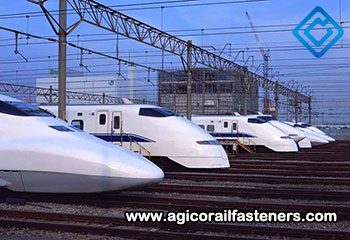How to Avoid the Adverse Effects of Thermal Expansion And Contraction On Seamless Rails
Seamless rail line is a long rail line which is welded together by standard length rail. The advantage is that the rail joint is completely eliminated, which is a key technology for achieving high-speed railway high-levelness, high stability, and low maintenance. We all know that the railway line is laid outdoors. As the outdoor temperature and humidity change, it will cause thermal expansion and contraction. The seamless rail railway line is driven by high-speed rail trains. Once the track is in trouble, it will inevitably lead to major accidents.

Damage of Thermal Expansion and Contraction to Rails
If we do not manage to deal with the impact of thermal expansion and contraction on railway, a series of problems will arise in our track. Rail expansion occurs when the temperature rises in summer, and the joints with proper length will be extruded and bulged due to rail expansion. If it is not serious, it will produce a bump, which will cause the train to run unsmoothly and send out an abnormal sound. If it is serious, it will cause the rail to be misaligned, causing the train to derail and causing major casualties.
How to Avoid the Impact of Thermal Expansion and Contraction on Ordinary Rails
In order to cope with the adverse effects caused by thermal expansion and contraction, on the ordinary track line, there will be a special gap between the rails, about 6mm wide, called the expansion joint. The small holes through which the track bolts pass on the rail fishplate are elliptical, so that when the rail expands in hot weather, the track bolts will have space for displacement. This is very important for rails. If there is no expansion space, whenever the temperature changes 1 degree, the rails need to bear 1.6 tons of pressure or tension. If the difference between the highest temperature and the lowest temperature in a place is 30 degrees in a year, the stress on the rail can reach 50 tons. Such rails may become skewed and seriously affect driving safety.

How to Avoid the Impact of Thermal Expansion and Contraction on Seamless Rails
Seamless rail is not thousands of kilometers rails without gaps, but 25 meters long ordinary rail welded together into hundreds of meters or even thousands of meters long, and then laid on the subgrade. There are two ways to solve thermal expansion and cold contraction of seamless rail.
The first method is to use sleepers made of concrete and fix the rails on the concrete sleepers with a strong fastening system. Before laying, the rails are elongated and treated as they expand in advance, before being locked onto the rails with rail fasteners. The rail itself bears all the temperature stress, so that it will not be stretched due to temperature changes. This method is suitable for regions with little temperature difference throughout the year, such as some regions in southern China.
The alternative method should be used in some areas with large temperature differences. Before laying the rail, an adaptive temperature and corresponding temperature stress are calculated according to the local long-term meteorological data. When dealing with seamless rails, use this data to properly stretch the rail, leaving a stress in the rail. In this way, even if the rail is stretched and contracted due to temperature changes, it will only offset the original stress, so as to ensure that the rail's expansion and contraction in a controllable range.
We receive enquiries in English, Español (Spanish), Русский язык (Russian), Français (French) and العربية (Arabic). Our professional team will reply to you within one business day. Please feel free to contact us!



